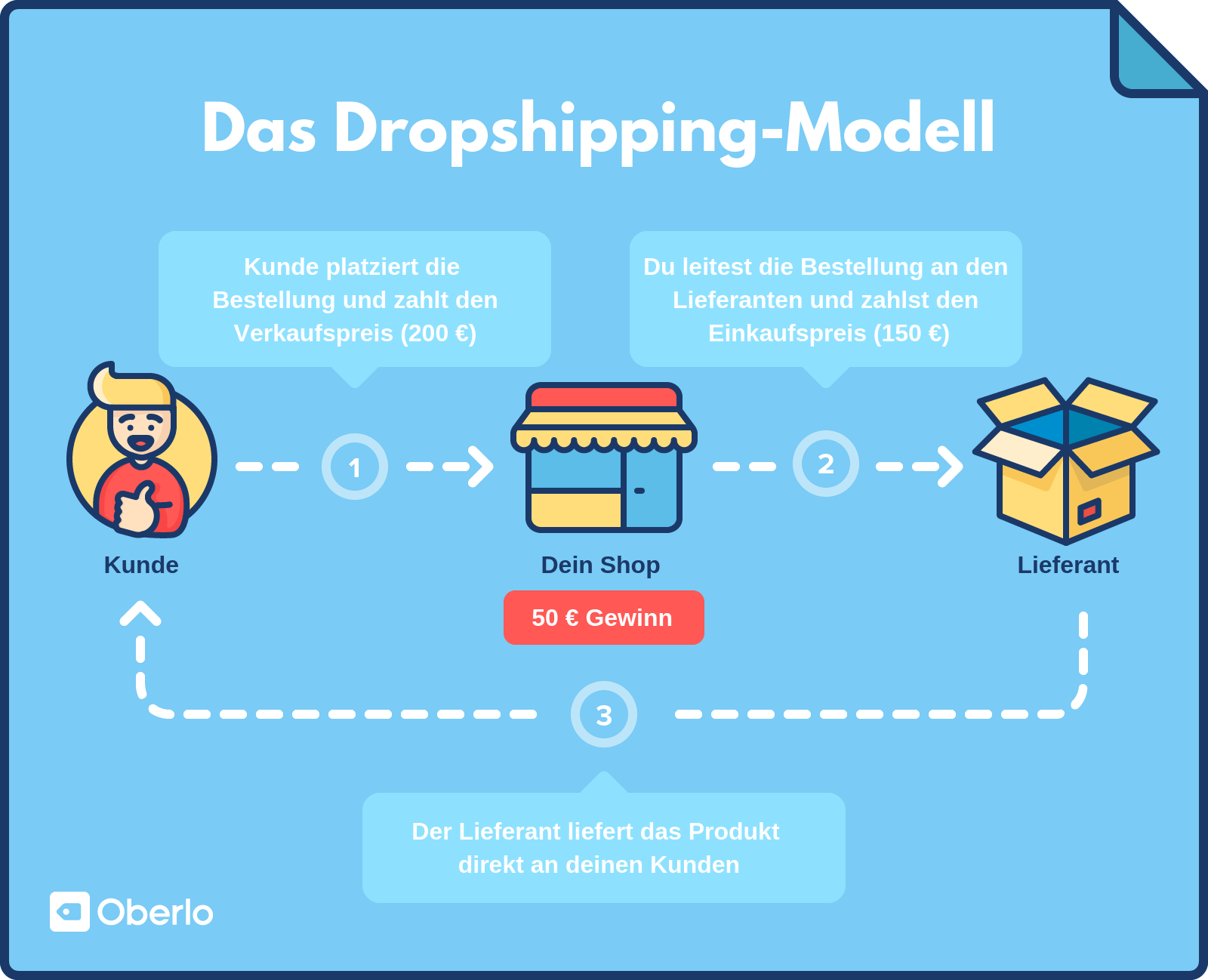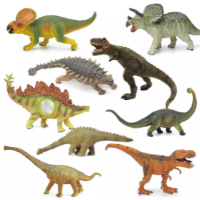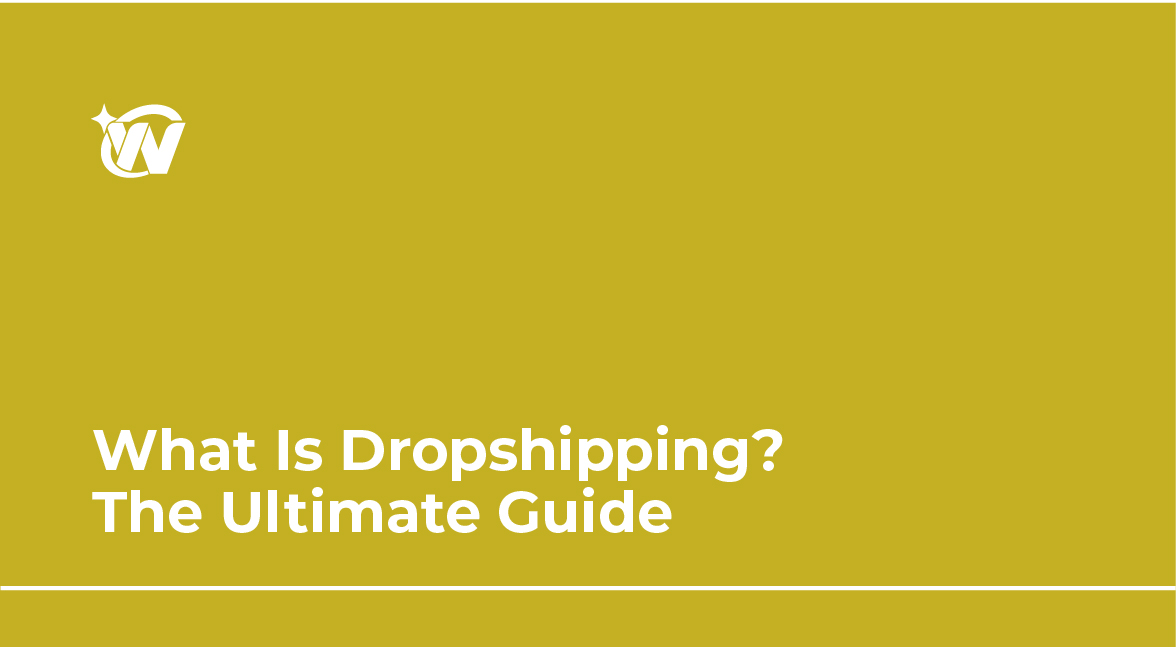
The 10 Best Dropshipping Websites for Your Online Store
Time is money.
You’ve probably heard the old adage repeated ad nauseum, but it’s not just a clever turn of phrase. In the world of business, time and money are nearly interchangeable; a lot of time can be spent making money, and with a lot of money, you can pay others for their time.
But what do you do if you’re low on both?
First-time entrepreneurs might be brimming with passion and enthusiasm, but a lack of experience can make it harder to secure financing. Without the money to hire employees, they’ll need to commit a lot of their own time.
Thankfully, there’s a solution for first-time entrepreneurs: starting a dropshipping business.
What is a dropshipping business?
Dropshipping is a retail business model wherein products sold by an online retailer are manufactured, warehoused, and shipped by a third-party dropshipping company.
Under a dropshipping business model, rather than purchasing large quantities of stock from a supplier, an online store will purchase a single item upfront, directly from the manufacturer, only after the payment is transferred from the customer’s credit card.
Dropshipping has a ton of advantages for first-time business owners. In the initial stages of your business, you won’t have a lot of employees, if you have any. Delegating the fulfillment of your order to a third party helps free up time that can be spent focusing on marketing, customer support, and growing your brand.
How does dropshipping automation benefit your online store?
Since dropshipping delegates much of the grunt-work of starting a business to a third party, it has a lot of advantages for merchants looking to grow their business:
Low overhead costs. When you dropship products, you’re only paying for the products after you’ve sold them, meaning you’ll never have to worry about sinking funds into over-stocking your product.
Less startup capital is required. Startup costs can be kept much lower since you don’t need to pay to have your products manufactured or stored. The added savings means more can be spent on paid ads to help jumpstart your growth.
Location flexibility. Since stock is managed from your drop shipper's location, there are fewer reasons to stay fixed to any one spot. You could work from home, your favorite café, or a secluded cabin deep in the woods (preferably one with decent Wi-Fi).
Fewer risks when testing new products. Most drop shipping companies highlight their bestsellers, meaning you already know which products are in high demand.
Saves a ton of time. Securing stock, managing logistics, and shipping products take a lot of time. With these tasks delegated to a third party, you can focus on marketing your products and building your brand.
Let’s take a closer look at how dropshipping works, and go over some of the options for automating your online business.
The 9 best drop shipping companies for your eCommerce business
All dropshipping companies perform the same function, but they can differ greatly when it comes to their costs, products, policies, and ease of use. All dropshipping success stories are unique, so the “right” dropshipper for one brand could be completely wrong for another.
When looking over options for your dropshipping store, it’s important to pay attention to the types of products the company sells, whether their service charges and shipping fees fit into your budget, and whether their shipping times are reasonable for the location of your customers.
To make it easy, we’ve compiled a list of the best dropshipping companies that we’ve come across. We’ll talk about each dropshipping service and tell you what kinds of merchants we recommend them for.
Let’s get started:
1. YiwuBazaar.com - Yiwu Small Commodity Wholesale Market
Yiwubazaar.com is the B2B e-commerce marketplace operated under the flagship company of Yiwu Shahin import-Export Co. Ltd. established in 2007 and located in Yiwu, Zhejiang, China. Yiwubazaar.com offers access to all the buyers around the world to explore Yiwu’s Small Commodity Market through our platform and fulfill all their sourcing requirement. This platform is designed to offer all the buyers around the world, the blend of traditional wholesale experience and modern ecommerce technology. We have chosen this path to bridge the gap between buyers around the world and Yiwu’s Small Commodity Market and make the business transaction happen very smoothly and transparently.
Price: Yiwubazaar's dropshipping features start at $ 0 / month.
2. DSers-AliExpress Dropshipping
When it comes to variety of products, few dropshipping companies can compete with AliExpress. The online retail service, which launched in 2010, features more than 100 million products, meaning it’s likely that no matter what business you’re in, you’ll find something to sell.
If you plan on dropshipping with AliExpress, the best option to use in your Shopify store is the DSers app. Under its free plan, the DSers-AliExpress Dropshipping plug-in allows you to explore AliExpress’s enormous collection of products and add them to your store in just a few clicks.
Under its Advanced plan—which is still less costly than the alternatives—you’ll get access to automation features that pull new orders from your store, ship products to your customers, and mark orders as fulfilled—all without you having to lift a finger.
Price: Plans start at $0 for 3,000 products, but we recommend the Advanced plan ($19.90/month), which includes automation features.
Advantages: Large product variety, low cost, and easy to sync with your Shopify store.
Disadvantages: AliExpress is one of the most commonly used dropshippers, so your products will be available at other retailers.
Recommended for: New merchants with a lower budget whose strengths lie in building a brand through the curation of products.
Shopify App: Yes.
Spocket is an order fulfillment service with a wide range of wholesale merchants based mostly in the United States and Europe, but it also has merchants based in Canada, Asia, Australia, Brazil, and other countries.
With the Spocket plug-in, you can browse merchants’ products and add them to your Shopify store in one click. Spocket also automates the entire order process, with products shipped to your customers at the point of purchase.
One of the biggest highlights of Spocket is its branded invoice feature, which allows you to create a custom invoice for your brand that’s shipped alongside your products. Branded packaging can go a long way in building brand awareness and acquiring repeat customers.
Price: Plans start at $24.99/month for 25 products, after a 14-day trial period.
Advantages: Spocket includes branded invoices that keep your business at the forefront of your customer’s minds, which is great for customer retention.
Disadvantages: Spocket can be quite pricey. It’s brand invoices are only available on the Pro plan, which offers fewer products at a higher price than alternative dropshipping apps.
Recommended for: Merchants with a bit of startup funding, who place high value on the ability to brand their own products.
Shopify App: Yes.
SaleHoo is a research tool and supplier directory for dropshippers, wholesalers, and ecommerce stores. The SaleHoo database includes over 8,000 wholesale distributors and dropship suppliers, with over 1.6 million wholesale products.
With SaleHoo, merchants gain access to the SaleHoo Market Research Lab, which provides in-depth data and sales insights on each product available. This means that merchants can see how well products have done in other stores, and on online marketplaces like eBay and Amazon, before adding them to their own.
SaleHoo even lets you see how many other retailers are selling each product, meaning you can factor in its availability when building your brand. This is perfect for merchants looking to add their brand’s own spin on a product they know is in high-demand, or to take their chance at offering exclusivity of a product that’s harder to find.
Price: SaleHoo’s dropshipping features start at $27/month. You can also gain access to its database (without the dropshipping features) for $67/year, or a one-time payment of $127.
Advantages: SaleHoo gives in-depth information about each product available, making it easier to find products that are in high demand.
Disadvantages: SaleHoo’s dropshipping features do not integrate with Shopify or any other e-commerce platforms, so you will be required to manually import products and orders between Salehoo and Shopify.
Recommended for: Though it doesn’t have an app, SaleHoo does have a lot of free API resources. Merchants that are more data-focused, with experience in custom development, are likely the best equipped to take advantage of SaleHoo’s unique features.
Shopify App: No.
Wholesale2b offers over a million products from wholesale suppliers based primarily in the United States and Canada, meaning if you're selling to customers in North America, Wholesale2b will be able to connect you with local suppliers to keep your shipping costs low.
Wholesale2b’s Shopify app pulls orders from your store, sends them to your selected dropshipper to be fulfilled, and even adds tracking information once the package is shipped—all automatically. It also has built-in integrations with Amazon and eBay.
Price: Pricing starts at $29.99/month after a seven-day free trial.
Advantages: Wholesale2b has a ton of dropshippers based in the United States and Canada, so shipping times can be kept on the low side if you’re based in North America.
Disadvantages: Products on Wholesale2b tend to be priced higher than on other platforms, so it can be harder to turn a large profit margin without a larger price markup.
Recommended for: Merchants based in Canada and the United States that are willing to pay a little more for locally sourced products and faster shipping times.
Shopify App: Yes.
6. Modalyst
Modalysts is an automated dropshipping app known for carrying big name luxury brands like Dolce & Gabbana, DSquare, Calvin Klein, and a lot more. Selling products from companies your customers already love can give a big boost to your own brand’s reputation in their minds.
For US-based merchants, Modalyst offers a marketplace of US suppliers that can ship domestic orders in six to eight days. Even if you’re not based in the US, Modalyst’s group of wholesale suppliers ship to more than 80 countries worldwide. The app also has an API partnership with AliExpress, meaning that by using the Modalyst chrome extension, you’ll get access to the millions of drop shippers on that marketplace.
Modalyst even curates collections of products made from sustainable materials from eco-friendly suppliers, for merchants looking to reduce their carbon footprint. Plus, you can add your own branding to your products, through the Modalyst Private Label Dropshipping Program.
Price: Modalyst’s $0 plan offers all its automation features and up to 25 products. For up to 250 products, it’s $35/month.
Advantages: Modalyst is very low cost. Although its free plan has a 25-product limit, it includes all of the automation features you’d get on the higher-priced plans. It also has a high volume of products, especially if you factor in the AliExpress Chrome extension.
Disadvantages: Products on Modalyst can be in short supply and sell out fast, especially if they’re from well-known brands. One common complaint is from merchants that add a product to their store, only to find that it’s out of stock shortly after.
Recommended for: Merchants on tight budget looking for a low-cost way to sell high-end, premium name brands.
Shopify App: Yes.
7. Doba
Doba is a dropshipping platform that offers suppliers based mostly in the United States and China. For merchants in either location, Doba offers an easy way to sell local products with fast shipping times.
Doba’s most unique feature is its automated pricing rules. Rather than price products manually, merchants can create “rules” to price their products at a fixed markup on the wholesale price. When suppliers change their prices, the automated price changes too.
Price: Plans start at $24.99/month after a 30-day free trial.
Advantages: With Doba, you’ll also be able to filter products by shipping origin, so you can be sure to select products that will ship within a reasonable time frame and manage your shipping costs.
Disadvantages: Doba’s dropshippers are integrated within the app, so it tends to have fewer suppliers than other dropshipping options.
Recommended for: Merchants based in the US and China who want to ensure that products are shipped quickly.
Shopify App: Yes.
Inventory Source is a dropshipping platform and order management tool that facilitates relationships between dropshippers and retailers, allowing them to sync products and inventory, and automatically transfer fulfillment information.
The app directly connects stores to suppliers without charging any additional fees for the products, allowing merchants to build a more personal relationship with their suppliers and offer products at a much lower cost.
But its most unique features is this: since Inventory Source is primarily a stock management tool, it’s the only option on this list that actually allows you to add your own dropshippers—though custom integrations do come with an added cost.
Price: Inventory automation plans start at $99/month.
Advantages: Inventory Source provides a great solution for merchants who already have suppliers, but have no way to sync their inventory and order data between them.
Disadvantages: Inventory Source can be quite expensive, and since it functions primarily as a tool, it’s better for merchants who have a bit of experience working with dropshippers.
Recommended for: Merchants that already have established relationships with suppliers or who are looking to build more personal relationships with their suppliers.
Shopify App: Yes.
Unlike the other entries on this list, Wholesale Central is not an app, tool, or platform, but rather a directory of dropshippers, suppliers, and wholesalers. For both buyers and suppliers, Wholesale Central offers an easy way to find tons of potential business partners.
On Wholesale Central, store owners can browse products and suppliers, or search for products and suppliers by name. When they find a product or supplier they’re interested in working with, they’re provided with contact information to reach out to that supplier.
Although Wholesale Central doesn’t offer any inventory management tools, it’s a free and vast resource that includes tons of dropshippers and suppliers that can provide your store with products.
Price: Free.
Advantages: Wholesale Central is a low-cost way to find a ton of suppliers that are open to building personal relationships with retailers.
Disadvantages: Wholesale Central doesn’t include any order-management tools to help sync orders and products with dropshippers.
Recommended for: Merchants that are looking to partner with wholesalers and develop more personal business relationships.
Shopify App: No.
10. Worldwide Brands
Established in 1999, Worldwide Brands is one of the oldest and most trusted supplier directories among veteran retailers. Dropshippers on Worldwide Brands must meet a set of criteria and established guidelines that helps ensure high-quality wholesalers.
Like Wholesale Central, Worldwide Brands is a directory of suppliers and dropshippers open to working with new retailers. While it might not offer much automation, it does include more than 16 million certified wholesalers, a wide range of wholesale products, and a dedicated list of certified drop shippers, if you’re looking for dropshippers specifically.
Price: One-time payment of $199.
Advantages: Worldwide Brands has a strict set of criteria its dropshipper must meet, so it’s a great resource for finding reliable suppliers of all types of high-quality products.
Disadvantages: Worldwide Brands does not offer any automation tools or an order management system, so syncing your inventory can be a hassle.
Recommended for: Store owners looking for trusted suppliers to partner with.
Shopify App: No.
Dropship branded products with print-on-demand services
If you’re an artist, designer, writer, or just an especially creative entrepreneur, you might find that dropshipping companies limit your ability to create a unique aesthetic for your brand. If that’s the case, you should consider using print-on-demand companies to drop ship your own custom products.
Print-on-demand dropshipping is a business model where you work with a supplier to customize and design your own products, usually easily printed things like t-shirts, mugs, tote bags, posters, blankets, pillowcases, tapestries, and more!
Dropshipping vs. Print- on demand: Which is better?
Neither business model is “better” for every merchant, but both methods have advantages and disadvantages that could make them the better choice for your business idea:
Print-on-Demand | Dropshipping |
Offers the ability to customize your products. | Aside from private label goods, there are few options to brand your products. |
Products can act as an advertisement, creating brand awareness when seen in public. | Since products are typically unbranded, there’s fewer opportunities for them to create brand awareness. |
Types of products are limited to ones that are easy to print on, such as t-shirts, blankets, mugs, and posters. | Wide range of products encompassing nearly every niche—including fashion, electronics, home decor, and everything in between. |
Harder to validate your products, since the unique designs will not have yet been sold anywhere. | Validating products is easy, because you’ll be able to see which items sell best on your drop shipper's website. |
Brand needs to be built through your own designs, meaning you’ll need to have some design talent or hire a designer. | Brand is built through the curation of products, so you will not need to be a designer, but it does help to have an eye for aesthetics. |
Since the products feature your own design, they’re one of a kind and available only at your store. | Since the products are sourced, it’s likely they are available at many retailers, especially if it’s from a popular dropshipping company. |
If you’re a more design-oriented merchant with artistic sensibilities, you’ll find it very rewarding to build your own brand through custom-designed products. If you’re not, you might find it difficult and time-consuming.
If your strength is in marketing, then you’re likely to have success in Drop shipping, which doesn’t require you to design your own products but curate them. Either way, you should have a good eye for branding.
And keep in mind that you don’t need to limit yourself to just one model of order fulfillment. You could, for example, build a fashion brand that includes your own custom-designed shirts and bags alongside dropshipped accessories like jewelry, hats, and gloves.
What is the best way to start a dropshipping website?
If a dropshipping business is starting to look like the perfect option for your next business, you’re probably wondering where to get started. Let’s take a look at the steps to building a dropshipping store:
1. Find an Idea
The first step to starting your business is coming up with a product idea. Remember that with dropshipping, you’re curating products around a brand, so your primary focus should be on the visual aspects of your brand.
It’s important to choose a brand and product that interests you. Not even the best business idea will take off without being fueled by the passion of its founder. Find something you like. Don’t choose an idea that’s uninteresting to you just because you think it will sell well.
Sometimes the dropshipper themselves can serve as inspiration. You could try browsing some of their products and seeing if there are ones that “fit” together and might serve a commonly under-served niche.
Once you have an idea, you’ll be able to identify your primary competitors and perform a competitive analysis. A competitive analysis is an in-depth exploration of your competitors' business strategies: their target markets, branding, key features, price points, and eCommerce websites.
Doing this will help you to evaluate their strengths and weaknesses, and highlight opportunities to outperform them when developing your own brand. Understanding your competitors will help you to identify what makes your own brand unique.
By evaluating the strengths and weaknesses of your competition, you can begin to formulate how to give your company an advantage. Download our free competitive analysis template and gain an edge over the competition.
3. Find a dropshipping supplier
With your market research out of the way, your next step will be finding a Drop shipping supplier that carries the goods you need to build your brand. There are a ton of suppliers that can be found via the websites listed here, but keep in mind that you don’t just have to use one supplier.
Supplier directories like Wholesale Central and Worldwide Brands are great for finding a retailer that carries a specific product. They can also be really great for brainstorming ideas and spotting under-served niches.
Many dropshipping companies connect directly to products in your Shopify store, so you could also sell products from different dropshippers alongside your own products if you wanted.
With your dropshipper(s) selected, you’re ready to start your online store. Remember that maintaining your store will be an ongoing process, so you can always add new products and adjust your branding based on what’s working and what isn’t.
What’s most important is that you’ve made sure everything on your website functions as it should and that customers don’t hit any snags in the process of making a purchase. Check out our Shopify store launch checklist to make sure you’ve got everything ready for your launch.
5. Market to your audience
With your store live, it’s time to start bringing in traffic. If you’ve built up a following on social media or within an online community, you may have customers at the ready who you can direct to your store right away. In most cases though, you’ll need to start identifying your target audience.
Find online communities dedicated to your product. Attend in-person trade shows and pass out business cards. Develop a social media marketing strategy to build your following online. And don’t forget to stay tuned to the news in communities that connect with your product, so you can stay on top of the latest trending products in your industry.



